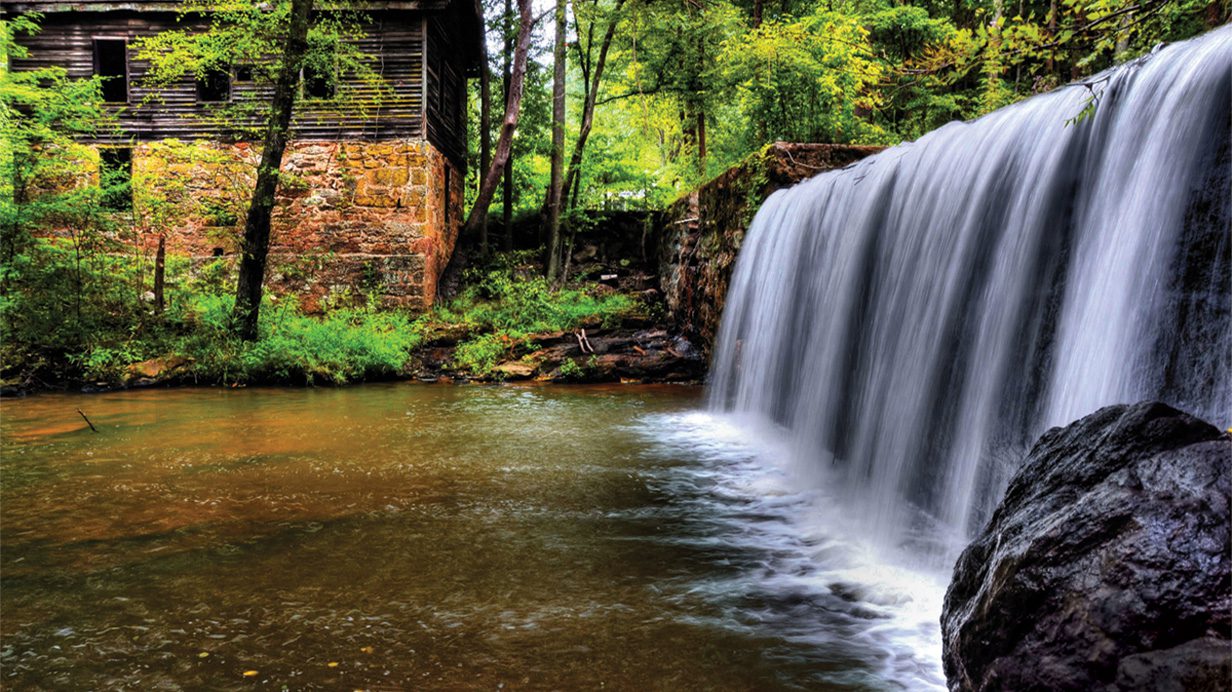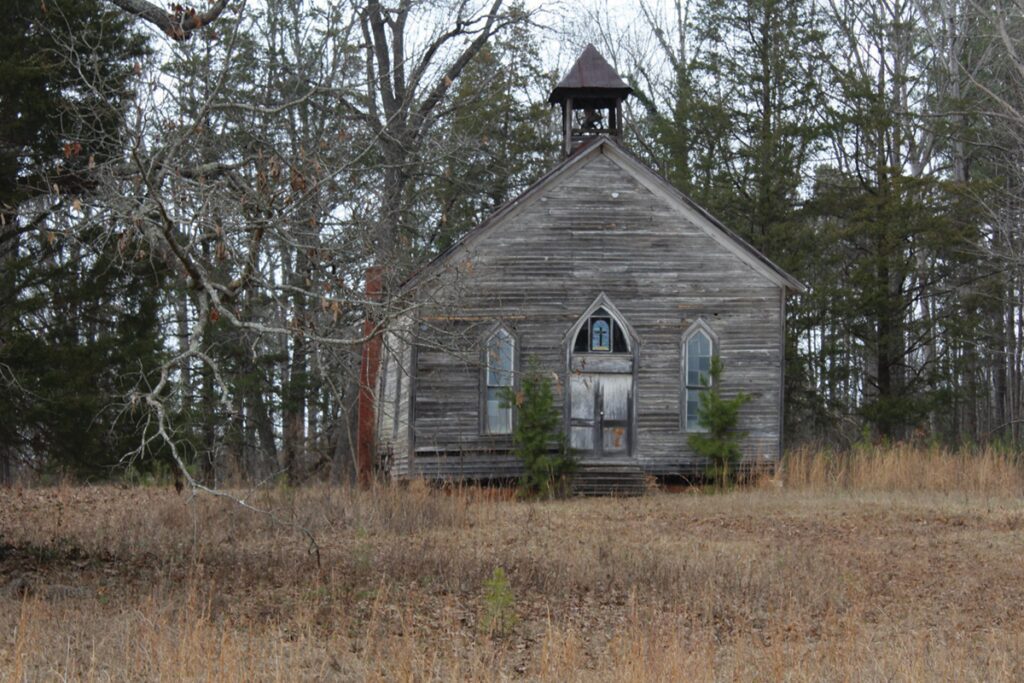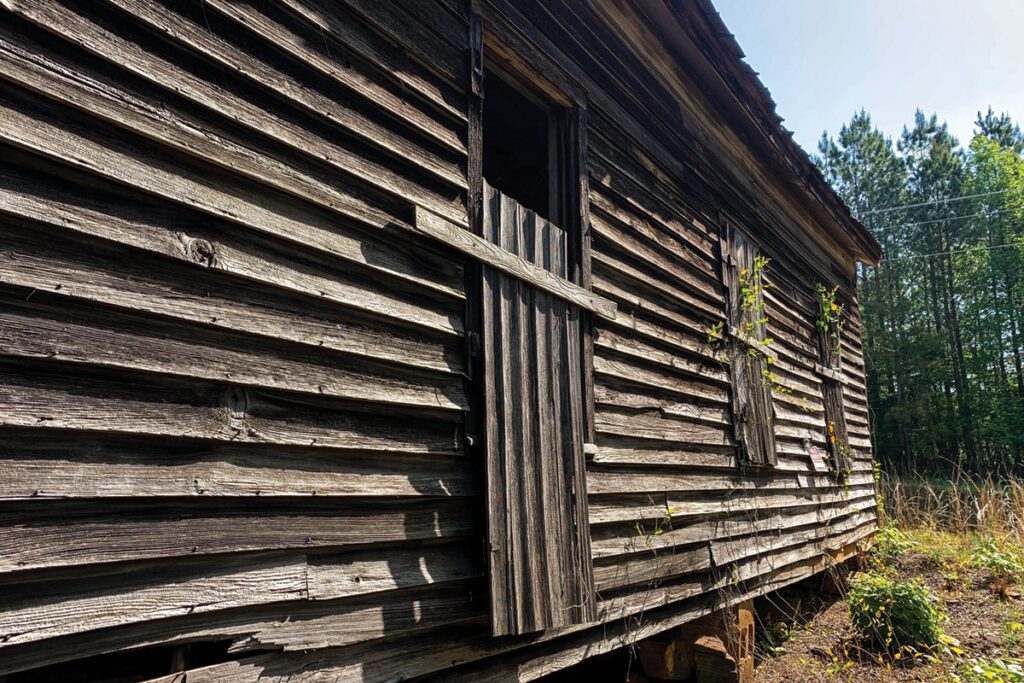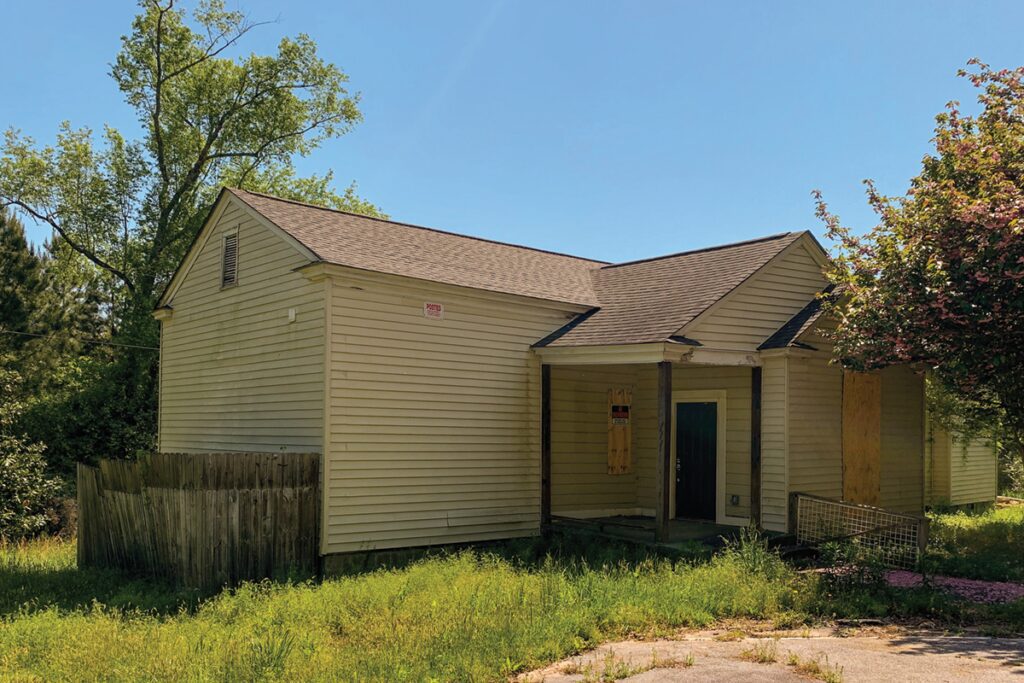of the university
Protector of the Past

Progress and preservation can co-exist, says Sam Hayes ’20, who wants to keep communities together.
Edwards Mill in Taylors, South Carolina, stands sentry to a bygone era. The water-powered gristmill, built by a Revolutionary War veteran and farmer, dates to the early 1800s and is just one of the structures Sam Hayes ’20 aims to protect through the Upstate Preservation Trust.
Hayes, who majored in history and politics and international affairs at Furman, started molding the organization as an undergraduate in 2019 with Lindsey Strand, who now serves as vice chair of the Upstate Preservation Trust. Now with the administrative hurdles cleared, they and others with a heart for historic buildings and places are in a position to make real change, or as Hayes says, “do the fun part” toward saving places that make the Upstate unique.

Mulberry Chapel Methodist Church, a post-Civil War Black church in Cherokee County, South Carolina. / Courtesy photo
While there are other historical societies and groups in the state, UPT takes a multi-pronged approach for safeguarding structures through education, advocacy and stewardship.
“We are hosting events and informing the public about the history of areas and the built environment because often people just have no clue what’s happening in their backyard,” Hayes says.
On the advocacy front, he says UPT is “still figuring it out,” as there are limits to what a nonprofit can do in terms of lobbying for legislation supporting preservation. “But there are other ways – informing citizens about the ways preservation can happen – a lot of people don’t know the process for it. And that goes hand in hand with education and stewardship.”
With respect to stewardship, UPT is committed to securing preservation easements, a legal arrangement between a private property owner and a nonprofit or government in which the parties agree to protect what makes the property historically, architecturally or archaeologically significant.

Located in Westminster, South Carolina, Old Bethel C.M.E. Church is one of the oldest remaining Black churches in Oconee County. / Nick Johnson
In the case of Edwards Mill, a privately owned site, a preservation easement would protect the building in perpetuity from being demolished or otherwise harmed. The mill, situated along the banks of Mountain Creek and precariously close to a heavily traveled road, has been subjected to natural deterioration and vandalism.
The group has its eye on other sites standing in harm’s way as noted in UPT’s list of Endangered Places.
Gothic revival-style Mulberry Chapel Methodist Church is a rare example of an African American church dating from the early years post-Civil War. Also on the list are New Hope Colored School (circa early 1900s), and Bethel Colored Methodist Episcopal Church, founded in 1876 by formerly enslaved African Americans.
Hayes’ penchant for preservation comes honestly. Raised in Charleston, he was indoctrinated into all things historical by his mother who worked in the field for decades. Later, he smuggled preservation into papers he prepared for Marian Strobel and Courtney Tollison’s history classes.
“I wrote about the Cathedral at Notre-Dame, and my senior seminar was about the Cold War, so I dug into bomb shelters and how they were incorporated into buildings,” says Hayes, who was fascinated by the shelter designations on Furman’s campus.
In addition to short-term stabilization, UPT is working with the owners to draft a long-term plan to restore the landmark and shield it from further damage.

New Hope School House, a historically Black school in Clemson, South Carolina. / Nick McKinney
Internships with the Greenville County Historical Society and the DC Preservation League added fuel to the fire. Then in 2019, he had a hand in the preservation discussions surrounding Greenville’s McClaren Medical Shelter and Asbury House, both catering to African Americans who were barred from whites-only facilities by Jim Crow laws. With every standoff involving city officials and property owners, Hayes inched closer to establishing the organization he now leads.
Having finished a post-baccalaureate fellowship with The Shi Institute for Sustainable Communities, Hayes is embarking on a master’s in urban planning at the University of North Carolina at Chapel Hill where he hopes to integrate what he’s learned about sustainability and affordable housing with, you guessed it, preservation. He’ll be involved tangentially with UPT during the program but says the “wheels are already turning” for his master’s project.
“I always try to dive into preservation in whatever way, shape or form I can,” he says. “I’m leaning toward combining these different passions I have to find a way to make saving old buildings sustainable.”
For Hayes, who ultimately wants to work on the preservation side of development, “sustainable” goes well beyond the physical space.
“Gentrification is a buzz word these days, and sometimes people argue that preservation leads to gentrification,” he says. “My goal is to use preservation to keep communities together, keep people in homes. I want to be in the development field, but development with humanity – making sure people are getting the developments they need and ones that help support communities.”